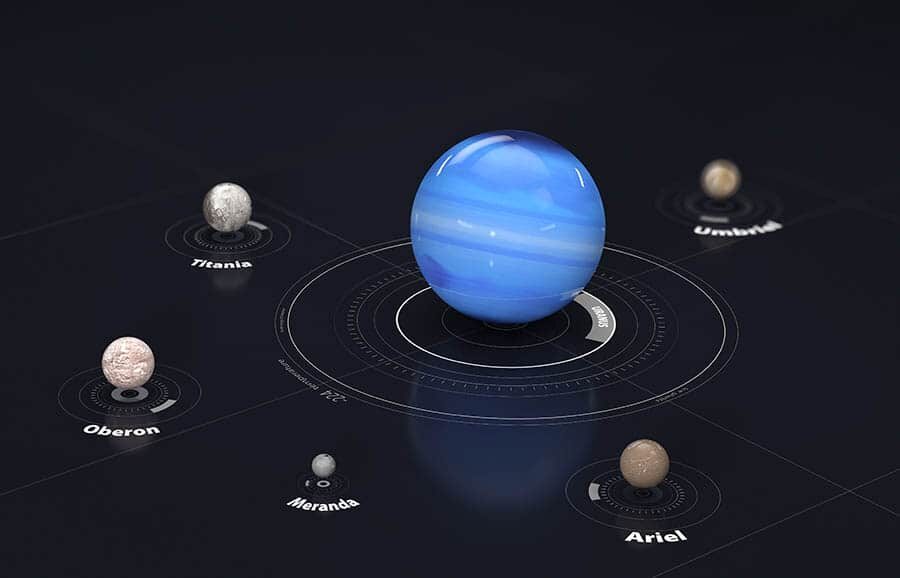10 Titania Moon Facts | Awesome Facts about Titania
Titania is known for being the biggest moon that orbits the planet Uranus. It has a much higher density than most of the other Uranian moons, which leads us to believe that although it is made up of a lot of ice, there are heavier substances in it’s core too. Let’s look at some facts about Titania.
- Titania has an estimated radius of 490 miles (788.4km).
- This is less than half of the radius of the Earth’s moon, and less than a third of the biggest moon, Ganymede. This makes it the eighth largest moon in our solar system.
- Titania orbits Uranus at an average distance of 270,820 miles (435,840 km).
- It takes Titania an estimated 8.7 days for it to complete one full orbit around Uranus.
- This planet takes it’s name from the Shakespeare play A Midsummer Night’s Dream.
- Titania was discovered in 1787 by William Herschel, just a few years after he discovered the planet Uranus.
- The surface of Titania is filed with many craters and canyons, and slightly red in color.
- The largest known crater on it’s surface is named Gertrude, and has a 326km diameter.
- The average temperature on the surface of Titania is -203°c.
- Because of the size of Titania, astronomers believe it to have it’s own atmosphere, largely made up of carbon dioxide.

Like the other major moons of Uranus, Titania takes it’s name from a Shakespeare play. In A Midsummer Night’s Dream, Titania is a character that is the Queen of the Fairies (many other fairies in modern literature have been named Titania after her). Her husband is named Oberon, which is another one of the Uranian moons, and Oberon’s servant in named Puck, which is the name of another smaller moon. Titania is described as a proud character, which makes sense as a name for the biggest moon of Uranus.
The core of Titania is generally unknown, however astronomers do believe they have a good idea of what is inside Titania. It has a fairly high density, which suggests that whilst it is made up of some water ice, there is a significant amount of heavier materials too, like rock and metal. We think that Titania is made up with the standard rocky core, with an ice mantle surrounding this. However, recent research suggests that there might actually be an ocean beneath it’s crust, so it may be more liquid than solid.
Titania is not as dark as some of the other Uranian moons, like Umbriel or Oberon. There are several different craters on it’s surface which are in excess of 100km diameter, with the largest Gertrude being more than 320km is size. However, there is another large basin that is yet to be named near Gertrude that is even larger in size. The only other known substance aside from water on Titania’s surface is carbon dioxide. We aren’t sure where this carbon dioxide comes from, but it’s likely it’s being emitted from beneath it’s surface.
Out of the major moons of Uranus, it orbits the planet as the second furthest with a 271,000 mile average distance. Like the other moons of Uranus, they have to deal with the consequence of Uranus’s distance from the Sun. Uranus takes 82 long years to complete one long orbit around the Sun, which can mean that it’s moons spend a long amount of time without any sunlight.
Although it can be very difficult due to it’s distance, it is actually possible to see the moons of Uranus with a telescope. Because of Titania’s size, it is usually one of the easiest to see. Have a look at this guide for seeing the moons of Uranus if you want to find out what you need to do.
All in all, Titania is one of the largest moons in our solar system and it is difficult to track down the moon in the night sky. In fact, after Herschel identified Titania in 1787, it was 50 years before anyone saw Titania again!